On the Road is a weekday feature spotlighting reader photo submissions.
From the exotic to the familiar, whether you’re traveling or in your own backyard, we would love to see the world through your eyes.
TKH
In Part 1 of this series while introducing the overall route of the hike, I had mentioned the ancient turquoise mine of Serabit El Khadem, one of our waypoints
The explanatory information that follows is something that I have dug up on the internet post trip. I am a chemist by training and I do not have the knowledge and training to evaluate the significance and veracity of what I have dug up and I am perfectly capable of muddling it up as I summarize the summary, so reader beware! Unfortunately our guides really did not have any information to share on the history of the site owing to their lack of any appreciable formal education courtesy of the tender mercies of the Egyptian government.
At the end I show some pictures from a site near Nueiba on the Gulf of Aqaba where pilgrims to Mecca and probably to St. Katherine have left graffiti behind
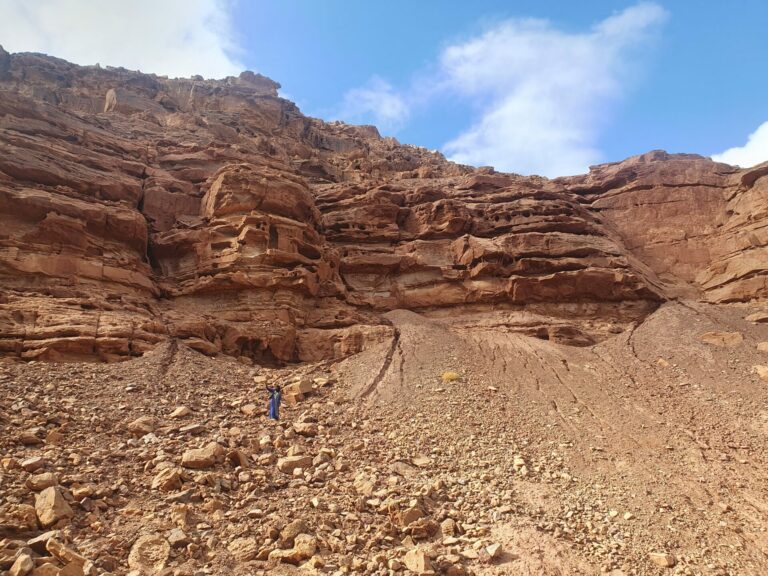
This is actually a turquoise mine a bit before we reached Serabit, but showing this gives me an opportunity to talk briefly about something else. This mine looks almost the same as the one in Serabit, only the pedants will care. What we are looking at here is the mine tailings, the rock thrown over the berm as the miners dig deeper into the rock.
The person in the photo is our guide that day, the only female guide on the Sinai trail, Omm Nasser. She is an incredibly strong-willed character. It is this trait together with the fact that she is married to a sheikh that gives her the leverage to be a guide.
Nonetheless she has to deal with restrictions in her guiding activities. For instance she cannot guide groups with men in them for overnight trips, but can do so with women groups. She and her husband then built a shelter in the village and from there mixed groups can take day trips.
(Photo credit: AMK)
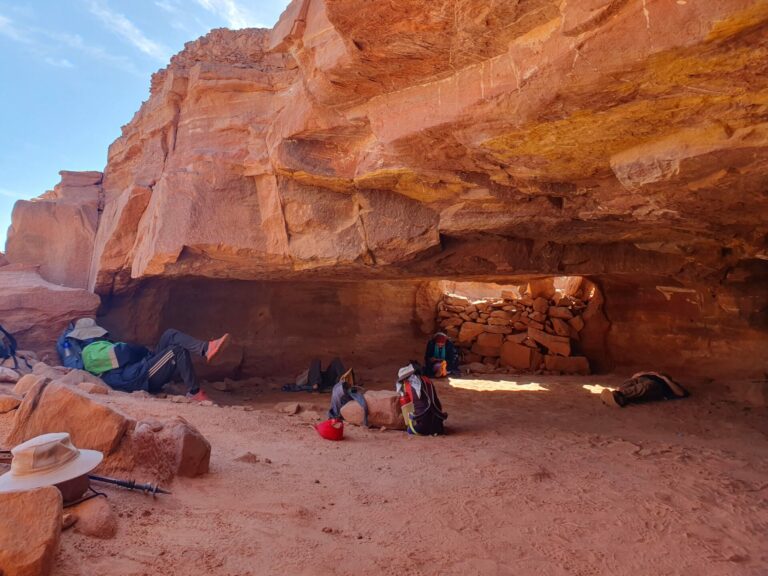
This is now at Serbia Serabit proper and shows a cave near the mines where probably the scribes, the overseers and the muckety mucks were working. For us it provided a good bit of shade to rest after half a day’s hike through open terrain. This mine is located probably some 1000-1500 feet above the major wadi.
(Photo credit: AMK)

This is one of the entrances to the temple at Serabit dedicated to Hathor, the cow goddess and goddess of the miners, the copper and turquoise miners specifically. This complex stems from around 1780 BC and was expanded in later centuries.
(Photo credit: AMK)

This picture gives more of an impression of the size of the site, about 80 x 35 m (250 x 100 ft). It is not as straight as a typical temple of that era both because of the location on the edge of an escarpment and because a second temple was added later.
(Photo credit:AMK)
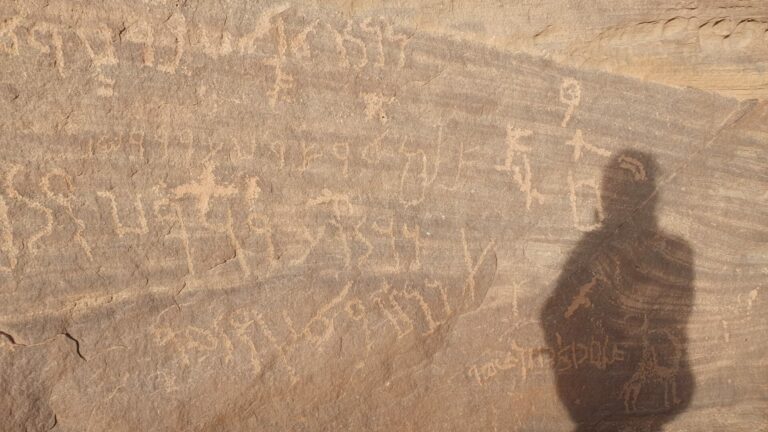
This is one of the inscription panels in the wadi below the temple. It is proto semitic writing and this alphabet moved from this area to the Phoenicians and from there to the Greeks, undergoing changes along the way. The writing was deciphered in the early years of the 20th century.
(Photo credit: AMK)
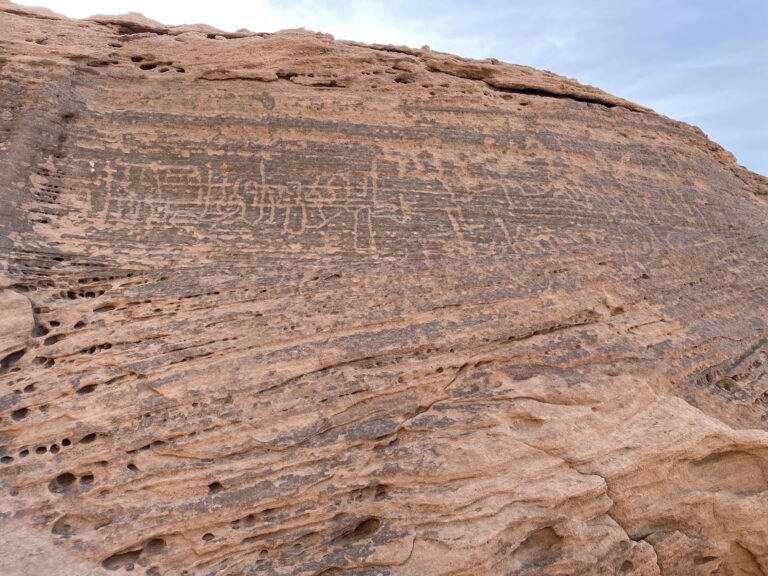
This is another panel, a bit more exposed and on a more slanted rock and hence a bit more weathered than the one above. This stuff is about 4000 years old.
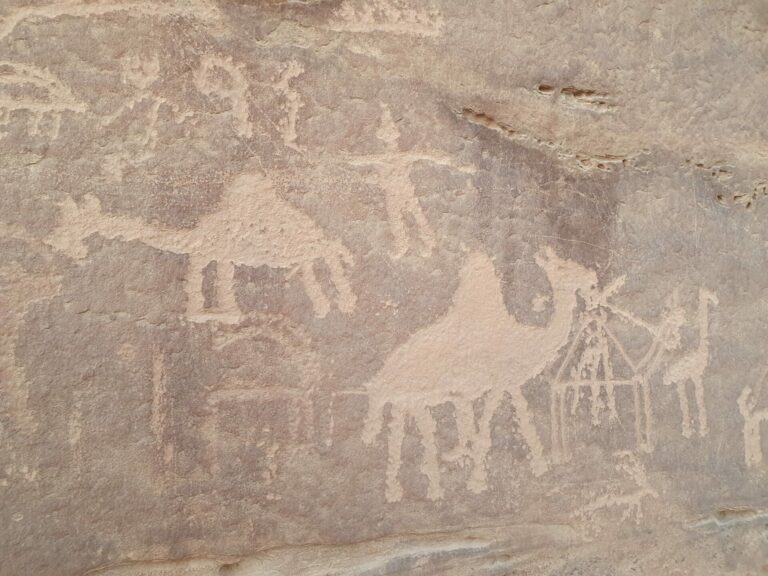
These were the kind of graffiti where the authorship and the age were impossible to establish. It could be the local youth having fun or it could be from ancient time. Without writing nearby it is difficult to assess the age.
(Photo credit: AMK)
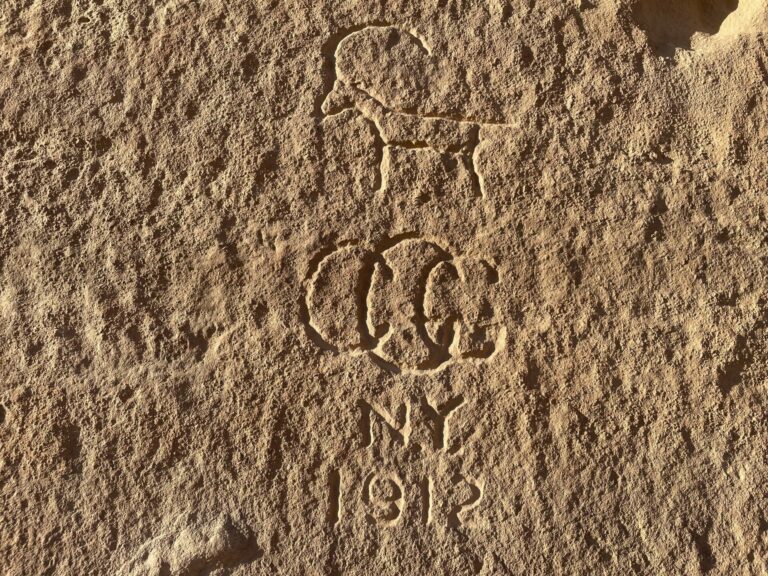
Now this guy, COC from NY, made it easy. He dated his graffiti as being from 1912. If he could travel there at that time, he must have been well off and no kid. At least he did not put his graffiti in together with those of the ancient people, but on a rock nearby.

This was a complex of inscriptions of much more recent vintage left behind by pilgrims to Mecca (Arabaic writing) and to St Katherine (Greek writing) (Notice the cross in the center of the picture)
(Photo credit: AMK)

OzarkHillbilly
Cool stuff, anytime spent in such places is like being in the presence of the ancients. It’s time travel.
Thanx TKH (and (AMK)
eta @TKH: Heh, I saw that and thought, “I must have misread.”
TKH
It was of course not in Serbia but in Serabit that we saw the turquoise mines. Alas, “artificial intelligence” knew better. If only!
Manyakitty
Love the ancient graffiti
The Kropenhagen Interpretation
I’m sure Cole appreciates the great lengths you went through to retrieve his birth records.
BretH
On the topic of graffiti, a cool tour in DC is (if it’s still available) to go under the Lincoln Memorial to see its foundations, stalctites and the graffiti from the workers who built it.
Denali5
I love seeking out rock art in the west-especially Utah. Until recently I did not realize it can be found in Africa and Asia. Of course the cave art at Lascaux and in Spain is spectacular – but not available to the public.
WaterGirl
@TKH: Fixed!
TKH
@WaterGirl: thank you and my apologies for the bother. I went through it twice, but one still got away!
cope
Wonderful stuff, thank you.
As OH observes, just being in the presence of ancient human creations like these is magical. You look at these efforts and imagine the person making them so long ago, standing there in the Sun and flies, chipping away, motivated by the same thoughts and emotions that we carry around in our own heads, oblivious about what the world will become in the coming centuries.
Thanks again.
StringOnAStick
It’s so wonder-filling to see such ancient glyphs, thank you!
stinger
Amazing.